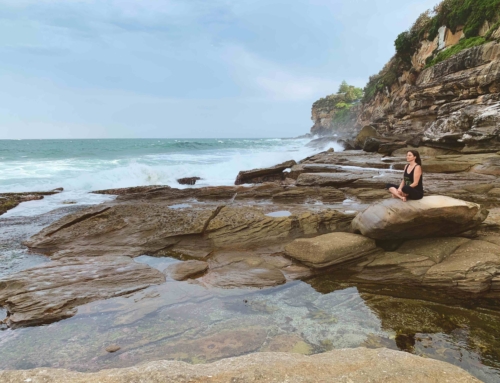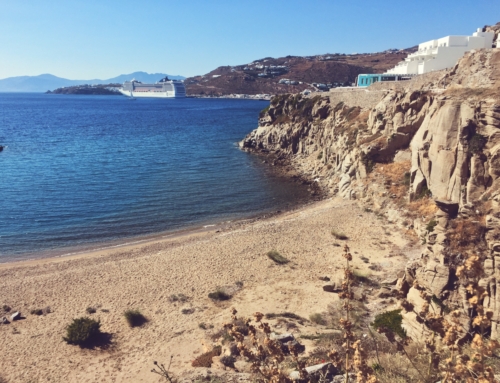While I did my research in preparation for the Kumano Kodo, I got the impression that one needed a guide to organise this trip. However, it turned out that one can quite comfortably prepare and experience the Kumano Kodo as an independent traveller on a budget.
Such an adventure, of course, requires proper preparation which is why I put this guide together. May this information help those who wish to walk the Kumano Kodo self-guided.
Where and What is the Kumano Kodo?
The Kumano Kodo stretches across the Kii Peninsula of Wakayama – a couple of hours south-west from the Kansai International Airport in Osaka. Kumano is the ancient name for the region conveying a deep sense of mystery. Japans’ largest peninsula is considered a spiritual hotspot. Its sacred sites of grand shrines and Buddhist sanctuary are linked by a network of pilgrimage routes.
The Kumano Kodo has been a pilgrimage destination for centuries. Records of this ancient route date back to the 10th century when the imperial family and aristocrats travelled on this pilgrimage route seeking healing, regeneration and salvation.
In 2004, the three sacred sites of Kumano Sanzan, Koyasan and Yoshino & Omine were included in the UNESCO’s world heritage list. The pilgrimage route that connects them along with the Way of St. James in Spain are now the only two pilgrimages in the world registered as a UNESCO World Heritage Site.
Why go?
The Kumano Kodo embodies the spiritual origins of Japan and offers lush mountains along with a rich cultural and natural heritage. Once a sacred pilgrimage reserved for emperors and samurai, the Kumano Kodo is today open to all modern-day seeker and wanderers. It offers a unique experience for the active traveller that is looking to immerse himself into the Japanese culture, history and natural beauty.
Self-guided or organised?
In comparison to other long-distance hikes, the route is not that difficult and can be organised and done solo. No need to spend thousands of dollars on a (self-) guided tour with a travel agent. I planned and walked the Kumano Kodo in May 2018 with no Japanese skills. In my experience, people along the Kumano Kodo were very friendly and welcoming – which helped to overcome any language barriers. Also, there are a number of useful websites which I will point out that will give you a head-start with your preparation.
Do I need to book my accommodation in advance?
Unlike the Camino in Spain, it is essential to book your accommodation in advance. I happened to walk the Kumano Kodo during the Golden Week in 2018. This is most likely the busiest time of the year when several holidays in Japan happen in a row. Fortunately, I had booked my accommodation months in advance. Others who didn’t, got stranded: I met a couple of tourists who hadn’t booked their accommodation and ended up sleeping in the open air.
Even outside the peak season, you need to plan your itinerary and make a booking. Keep in mind that most guesthouses don’t open their doors unless they know that they have guests coming. It is not common in the area to simply show up and expect to find a place for the night. With the help of the official reservation system, you can easily book your accommodation, arrange luggage service and get useful information for your pilgrimage.
When to go?
While the Kumano Kodo is open all year round, the best months to hike the Kumano Kodo are considered the months of April-May and September. During these months, the temperature is moderate with longer daylight hours on offer. To avoid bigger crowds, don’t repeat the mistake that I made. Best to avoid the ‘Golden Week’ which starts around the end of April when most Japanese get about a week off.
Also, consider that it gets dark much earlier in winter. From December to February, the temperature drops below zero (degrees Celsius) and at higher elevations, there can be snow. From June to August, expect hot (above 30 degrees Celcius) and humid temperature with high chances of rain. Though you need to be prepared for rain at any time of the year.
Which route to take?
There is not one single route that defines the Kumano Kodo – you are looking at a network of routes leading to the three Grand Shrines, the main sites of worship: Kumano Hongu Trisha, Kumano Hayatama Taisha and Kumano Nachi Taisha. The Nakahechi Route (also referred to as the Imperial Route) is the most popular route with both locals and foreign visitors. It is best suited for self-guided hikers who are keen to hike roughly 70-100km.
How to access and get around the Kumano Kodo?
The trailhead of the Nakahechi / Imperial Route of the Kumano Kodo can be accessed by public transport. The closest airport is Kansai International Airport located south-west of Osaka. Thanks to Japan’s bullet trains, you can reach the Kii Peninsula from any major city on the same day. From Kansai airport/Osaka, you simply catch a train to Kii-Tanabe, the gateway to the Kumano Kodo. The train ride takes roughly 2-3 hours (including a change-over in Wakayama). In Kii Tanabe, you hop on the local bus that will take you to Takijiri within an hour – the starting point of the Nakahechi Imperial route. As buses are limited, it is best to check the timetables available online to plan your journey. It may also be worth purchasing a JR Pass in advance which covers the Kii Peninsula.
How much time is required to walk the Kumano Kodo?
The popular Imperial route starts in the West and ends up in the east of the Kii Peninsula. Hike itineraries are typically 4-5 days, but you can extend or shorten them as you like. If you have the time, it is well worth walking the entire route which covers roughly 80km. Allow a minimum of 4 full days for the full hike plus 2 days for arrival and departure.
If you have less time, you can shorten the trek by catching the bus. The Kumano Kodo tourist information desks provide pilgrims with bus timetables. Make sure you check the timetable in advance as buses run quite infrequently.
What does a typical walking itinerary look like?
Day 1: Train from Osaka to Kii-Tanabe (2-3 hrs); Bus from Kii-Tanabe to Takijiri-Oji (~40 min).
Day 2: Walk Takijiri-oji to Tsugizakura-oji (18km /~8 hrs).
Day 3: Walk Tsugizakura-oji to Kumano Hongu Taisha (21km /~9 hrs).
Day 4: Walk Hongu Area to Koguchi (13km /~6 hrs).
Day 5: Walk Koguchi to Kumano Nachi Taisha (14.5km /~7 hrs).
Day 6: Bus from Nachisan to Kii-Katsuura train station. Depart Kii-Katsuura.
How difficult is the hike and what level of fitness is required?
An above average level of fitness is required to hike the entire route from Takijiri to Nachi. The daily average ranges from 15-25km per day for 4 days. The route offers a mixture of unpaved, uneven trails, ancient cobblestones and seemingly endless numbers of stairs. The highest points with an elevation of 868m are found along the Ogumatori-goe section from Koguchi to Kumano Nachi Taisha.
You can imagine that carrying your backpack is quite challenging as there are a number of very steep climbs and ascents. However, it is up to you to choose the sections you want to hike. I came across a number of locals that took their kids and grand-parents on sections of the Kumano Kodo, so it’s perfectly ok to shorten the trek and spend more time in the Onsen (hot springs). When planning your trip, keep in mind that there is always the option to catch a bus to the next point of interest – should your legs give in.
Is the path well sign-posted?
While I got lost a couple of times, it was easy to get back on track (using the offline navigation app maps.me). The moment the path seems to disappear, you know that you are off track and that it’s time to turn around. There are lots of trail markers along the way that let you know that you are on the Kumano Kodo. Every 500m, there are signs with a number on it which you can match with the number on your map, so you know exactly your position. The markers that tell you that the path you are on is NOT the Kumano Kodo are particularly helpful.
How to access money?
There are only a few ATMs available in the area. It is highly recommended to get cash out before you embark on your adventure. Be aware that many facilities do NOT accept credit cards. Check in with your local bank that your card can be used within Japan to withdraw cash. Should you experience issues with Japanese ATMs, try the ATMs at the 7 Eleven stores or post office.
How much does it cost to hike the Kumano Kodo on a budget?
Organised tours (including the “self-guided” ones) will often cost well beyond $2,000. When you organise your trip independently, you need to budget for far less. Next to the airfare to fly into Japan (with Osaka being the closest international airport), you are looking at expenses for public transport (trains and buses) to get to the trailhead of the Kumano Kodo and back. Also, budget for the bus fares to transition between entry points of the Kumano Kodo and your accommodation (unless you are happy to walk a bit extra which is what I did). It may be worth purchasing the regional JR Railpass prior to your travel to save on transport.
Plus, you will need to purchase food and accommodation. Prices for backpacker style hostels start from 3000 yen per night/person (~30 USD). However, these are only scarcely available along the route. On average, you are more looking at 6000 yen or 9000 yen (~60-90 USD) per person for your accommodation. The good news is that these prices often include your dinner, breakfast and lunch package. In my case, I paid a total of 26000 yen (~260 USD) for 5 nights’ accommodation.
Should I opt for the Food / Accommodation Combo?
If you have the budget, I would highly recommend opting for the more expensive food/accommodation combo. Out of the 5 places that I booked, I had included dinner, breakfast and lunch box at 2 occasions. I enjoyed the opportunity to mix and mingle with other pilgrims (mostly Japanese tourists) and taste the local cuisine. The home cooked meals were prepared with lots of love and really tasty – especially after hiking all day.
Is there food and water available along the Kumano Kodo?
There are next to NO restaurants along the track, with the exception of touristy Hongu. However, you will find small grocery stores in most villages that you will pass through where you can stock up on snacks and drinks for your hike. Plus, there are numerous vending machines along the way selling soft drinks, water and coffee. Nevertheless, it’s best to stock up on water before leaving the accommodation to keep hydrated throughout the day.
What to bring?
The Kumano Kodo is quite challenging, so when packing your backpack, you want to be a minimalist. Think of anything that you would take on a proper hiking journey. Dress in layers as temperatures can change drastically within a day. Here is a list of items I took along: Hiking poles, proper hiking shoes (broken in!), rain gear, warm clothes, water bottles, snacks, maps, camera, charger, adapter, sunnies, first aid kit, torch.
Can I store my luggage while hiking the Kumano Kodo?
Yes, you can store your luggage for 2000 Yen while hiking the Kumano Kodo if you plan to return to the same place where you started. What is even better is to take advantage of the luggage forwarding system (see section below).
Is there a luggage forwarding system available?
Yes, there is a luggage forwarding system in place. This works really well for those who prefer to hike with their day pack only. Most people I met took advantage of this service which costs about 2000 yen per transport.
I chose to hike with my big backpack that had everything I needed for the 4 days (including snacks and water). However, I was grateful for the luggage forwarding system that allowed me to remove anything that wasn’t essential for my hike. I had my unnecessary items forwarded from the tourist information in Kii-Tanabe to my final destination in Kii Katsuura. This enabled me to continue my journey without having to return to Kii-Tanabe.
Essential Apps and Sites for your Japan Trip
I want to leave you with a list of my favourite apps and websites that were crucial in preparing my hiking trip. These also helped me navigate around Japan during my adventurous 2-week trip that followed the Kumano Kodo. Without them, I would have clearly struggled: With limited English being spoken, busy cities, and complex transportation systems, Japan can be challenging for any visitor. So make sure you download the apps below prior to your departure. While public Wi-fi is becoming more common, it’s not yet widely spread enough to rely on. I am positive that these online tools will help make your trip run smoothly.
Websites to help you organise your Kumano Kodo Trip
The Tanabe City Kumano Tourism Bureau offers a range of helpful information on the Kumano Kodo, such as maps, model itineraries and transport options.
Kumano Travel is the Official Community Reservation System. This local, community-based initiative offers accommodation, tours & activities, and luggage forwarding services. To make a booking, you first send them a reservation request through their website. Once the booking is processed, you will receive an email with more detailed information. Full payment is required at this stage to confirm the booking.
Navigation Apps
The transportation search engine Hyperdia provides you with information on routes and times for trains and planes.
Navitime offers a comprehensive explanation and introduction to Tokyo’s transportation network, complete with maps, travel times, and a route planner.
maps.me – The offline navigation app maps.me is perfect for navigating to your destination without the need to connect to the internet. Make sure to download your regional maps in advance to access them offline.
Overcoming Language Barriers
Imiwa is a free multilingual Japanese dictionary available on the App Store for iOS.
Google Translate helps you translate your language to Japanese and vice versa without the need for internet connection. It comes with an instant camera translation that translates text in images by simply pointing your camera.
Free WIFI
The app Japan Free Wifi searches for free Wi-Fi in your area and automatically connects your phone to any available hotspot.
Other useful Resources
Japan National Tourism Organization‘s website helps you organise your itinerary in Japan with its in-depth, neatly-categorized information. It also provides the latest news and travel warnings, while it helps you navigate the transportation system and find accommodation.









